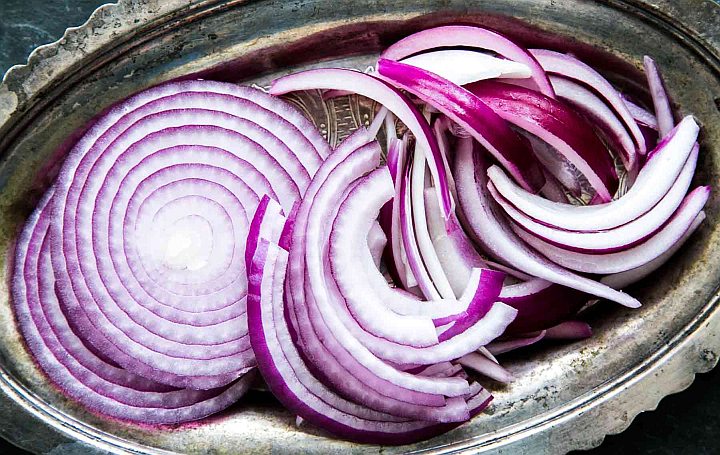10 foods for people with insulin resistance

Insulin resistance also known as Hyperinsulinemia, originates when the metabolism stops reacting to the work of insulin in the body, a hormone that is secreted by the pancreas to spread glucose in the cells and thus be able to maintain balanced levels of sugar in the blood.

This disorder today has developed in thousands of people around the world, but in some cases, it has caused obesity, overweight, eating disorders, heart disease, high risks of cancer and premature aging. For this reason, it is important to know what are the foods for people with insulin resistance and to let the metabolism work properly.
Insulin resistance is the most common carbohydrate metabolism disorder and causes serious health problems.
The metabolic syndrome is directly related to the series of health problems that includes insulin resistance, also known as syndrome X, these represent a prelude to the development of type 2 diabetes and pre-diabetes and a set of developed diseases, including obesity and heart disease.
Table of Contents
What is insulin resistance
The person suffering from hyper insulinemia may be producing more insulin than normal, to convert the amount of food they have eaten into energy. The pancreas works overtime to produce more insulin, because the body’s cells are resistant to the effects of insulin.
Basically, the cells, despite the presence of insulin in the bloodstream, are not unblocked and cannot receive enough glucose, so it is returned to the bloodstream, raising blood sugar levels, and reducing the energy capacity of the body in general.
Insulin is a vital hormone that is produced in the pancreas. It is involved in the absorption of the energy provider glucose (sugar) from the blood into the cells of the body and therefore reduces the level of sugar in the blood. When cells become less sensitive to insulin (resistant), the metabolism needs more and more insulin. Research now assumes that insulin resistance can be inherited. Despite the hereditary predisposition, diabetes only develops if an inactive lifestyle and poor diet are added.
Causes of insulin resistance
Insulin resistance can have several causes, sometimes very different. The exact mechanisms get quite complicated in detail.
The main causes of insulin resistance are poor diet, lack of exercise, excess stress, lack of sleep, and being overweight. We could consider the modern western lifestyle as a common cause of insulin resistance, which is certainly not a coincidence. In addition, other factors such as age and genetic predisposition influence.
Let’s move on to assessing the causes of insulin resistance in more detail.
1. Stress
The sensitivity of cells to insulin is also significantly influenced by hormones and other messenger substances. A good example is stress hormones, which can make the body less sensitive to insulin. And that even makes sense from an evolutionary point of view.
2. Sedentary lifestyle
We also know for a fact that lack of exercise leads to insulin resistance in the muscles.
Carbohydrate metabolism is also a matter of training. The best example is well-trained endurance athletes: when a cell has to generate a lot of energy, it produces more mitochondria (the powerhouses of cells). This increases your ability to burn glucose and provide energy. Athletes also have higher glycogen stores. Therefore, you can burn and store the same amount of carbohydrates much better than an untrained person.
This means that carbohydrate metabolism is not so easily overwhelmed and the likelihood of carbohydrates turning into fat is much lower. And even then, athletes can cope much better with the larger fat deposits in cells without becoming insulin resistant.
3. Genetics and age
Professor Timothy Noakes (born 1949) is a world-renowned sports medicine specialist and has taught at the University of Cape Town in South Africa for a long time. In the 1980s he was an important running figure and wrote a well-known basic play (“The Lore of Running”). In his life he has completed more than 70 marathons.
Such a fit person definitely can’t become insulin resistant, right? Obviously yes. In the early 1950s, Noakes developed type 2 diabetes. His problem is a genetic predisposition to insulin resistance, which runs very high in his family (many type 2 diabetics), and then becomes more pronounced with age. So, this has nothing to do with the unhealthy lifestyle factors that we have discussed so far. For some people, insulin resistance is simply written in their genes, however, there is also a way to prevent its development, precisely with diet and good lifestyles.
4. Unbalanced diet and abundant carbohydrates
What exactly happens when we overeat? Our cells have to constantly absorb more energy than they can use and store on their own. That may not go well for a cell in the long run.
So, it downregulates the number of your insulin receptors to lower the insulin signal and stop the energy supply. In this case, you can think of insulin resistance as a reasonable adaptive response.
An oversupply of carbohydrates can quickly become a problem because glycogen stores are so limited. Carbohydrates are now turning more and more into fat, which can be stored much better.
Foods for insulin resistance
The foods recommended for the case of insulin resistance should be considered not so much for their calorie content, but rather for the type of food, since we must be clear that losing weight is one of the most important pillars in the people who need to fight insulin resistance.
Olive leaf extract
Scientific research adds that the extract of this plant helps reduce insulin sensitivity. So, it is recommended to buy natural capsules based on olive leaves to reduce it by an average of 15%.
This is one of the foods that have been used for several years to combat diabetes and the results have been satisfactory.
Berries
The body does not require as much insulin to keep sugar levels working properly after a meal if berries are consumed.
It has been proven that adding this food to the diet can eloquently help reduce the insulin spike after a snack. For this reason, it is convenient to consume supplies such as lingonberries, strawberries, blueberries and blackberries.
Turmeric
Among the foods for people with insulin resistance is turmeric, a natural plant that, in addition to being used in the kitchen, has effective properties to prevent type 2 diabetes.
This food is also responsible for reducing insulin resistance helping to keep blood glucose levels stable, which helps fight the transmission of fatty tissue, providing a powerful tool in the fight against fat and overweight.
Black seeds
With just two grams of this product on an empty stomach, insulin resistance can be reduced. Thanks to its properties, this plant has been treasured for thousands of years. It is often referred to as black sesame, Roman coriander, black caraway, and black cumin and has been the treatment for all types of illness except death.
Berberine
This plant is an acid compound that helps people with insulin resistance, especially to reduce type 2 diabetes. It has been shown that the consumption of berberine during the day or on an empty stomach can reduce blood sugar levels in just three months, as well as metformin.
Spirulina
During a study it was found that spirulina is ideal for reducing insulin levels. This type of algae has a high level of protein and has all the essential amino acids for human health, it also has other nutrients such as minerals, gamma acid and vitamins.
All of them can help prevent numerous cardiovascular diseases, type 2 diabetes, and neurodegenerative disorders.
Ginger
Adding ginger to food or a drink can help lower blood glucose by up to 10%. This is why it remains an important herbal medicine worldwide due to its main acrid components, which help improve diabetes by taking into account the increase in insulin secretion and glucose clearance.
Citric fruits
Among the citrus fruits that can be consumed for insulin resistance are oranges, limes, lemons and grapefruits. This type of food is full of fiber and vitamin C, which help reduce diabetes at the same time. The soluble fiber they have also regulates blood pressure and blood glucose levels.
Cinnamon
The cinnamon is considered one of the oldest and multitudinous spices, it has been used for years thanks to its aroma and its benefits for human health. Consuming less than half a tablespoon of this food a day can help lower blood sugar levels in people with type 2 diabetes, while improving their ability to respond to insulin.
Fish rich in omega 3 fatty acids
It has been scientifically proven that foods rich in omega 3 acid can prevent the development of type 2 diabetes, as well as lower blood pressure, reduce coronary heart disease and lower triglyceride levels in the blood. This puts it on the list of foods for people with insulin resistance.
Finally, physical activity can be an ally in people with insulin resistance. Physical activity also appears to improve the body’s ability to use insulin by lowering insulin resistance, which is why activity is so important in managing diabetes.

